Interview with Terry Clausing: His Thoughts on Anritsu Products
We had an interview with Terry Clausing (Drysdale & Associates) who specializes in temperature measurement. He explains temperature measurement and its importance in Anritsu products.
So could you please state your name and introduction
My name is Terry Clausing. I am the President and Owner of Drysdale & Associates INC. We are a small engineering company. We do a variety of things related to temperature measurement. So for the most part, most of my expertise is involved in measuring how hot things are.
Could you tell us what Drysdale does and what services it provides?
There are four basic services that we provide. First of all, we’re a professional engineering company so I’m a licensed PE. We offer a variety of services for ensuring that the temperature of products and of processes is accurate to the customer’s specifications. In addition to that, we also distribute some equipment. We have a variety of things we handle. We are also a calibration lab. We calibrate infrared temperature sensors and thermocouple probes. The last thing that we do is training. We do an extensive amount of training and non destructive testing This training is specifically associated with temperature measurement and thermal imaging. It's all about understanding how temperature and heat behaves in different materials here.
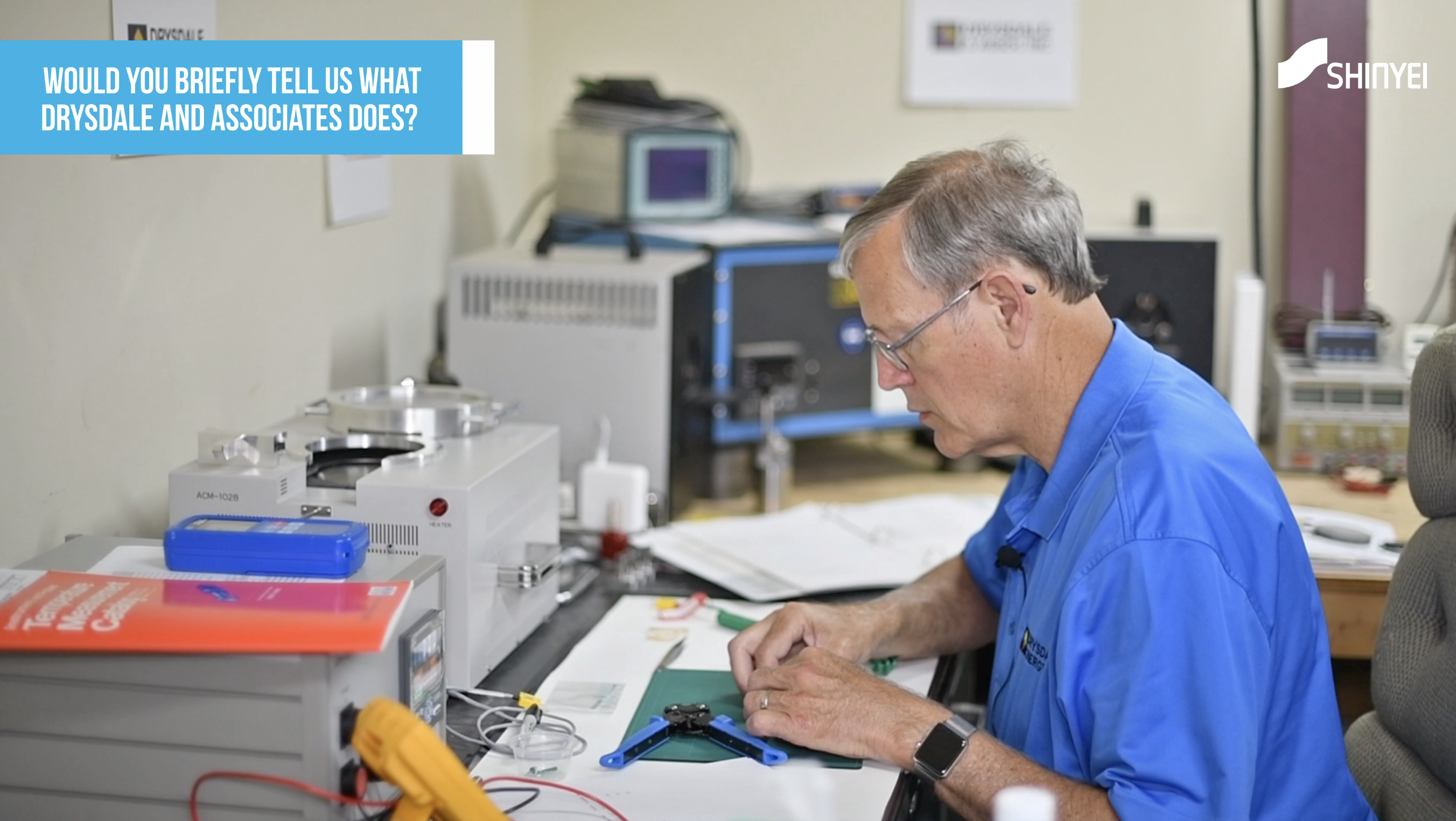
What are the key factors of accurate temperature measurement because you said you do trainings here?
This is really a key question. Most people think that the key to getting accurate temperature measurement is having a properly calibrated instrument but the real key is understanding how heats behaves. So, for example, I have a metal block and a wooden block and with these two blocks. If I put this in your hand, the most common observation is that the metal block is cold. Actually, the two materials have the same temperature. They have been sitting in this room for four days at a steady state temperature. It’s about 19 degrees Celsius. As a matter of science, these have to be the same temperature but people think that this one is cold. The reason for that is that they don’t understand what they are sensing. What they are actually sensing is the movement of heat. The metal because it has higher rate of thermal conductance is sucking the heat of the person’s hand while the wood is essentially more like an insulator. So the first key to accurate temperature measurement is fundamentally understanding how heat behaves in the materials. Another thing that is very important is understanding how to use that sensors that you’re working with. So for example when you have contact thermocouples. Most people they have a contact thermic thermocouple probe. There is one right here and they got a reader. They plug it in. Yes they are reading about room temperature. It must be good. But when you plug it in and check it on a reference scanner you would observe that I tested this awhile ago. Its reading 11 degrees low. That's substantial if you’re using it for checking your product or process that can be a difference between having the proper quality or having reject. It's a big deal. The error can either be positive or negative. You know the thermocouple probe can be on the high side or it can fail to the low side. The third thing is very important though is really critical that the equipment is well calibrated on a regular basis because that's how you have that peace of mind that your equipment is really reading correctly.
Do you even know about how temperature could fail on both sides because most of the time you will reading lower than actual temperature we assume that its broken but when its reading higher thats at least most of us don’t even consider when we are taking temperature of something when temperature is actually higher than what it supposed to. Would you say that it is something that a lot of people would come across? Is it a common thing?
It is actually a very common thing and until you test your instrument, you will not know. The failure that people are most aware of would be like this probe where this one comes in for calibration but you can see that the thermocouple element is broken. So this one won’t read at all. I’m not reading all. Thats a good thing because we know this one needs to be repaired. The other instruments the fact that they’re still reading can give users a false sense of assurance.
That could be a big problem like you said. 11 degree difference that could be especially when they are using like a quality assurance line that would be a difference between a product actually what not.
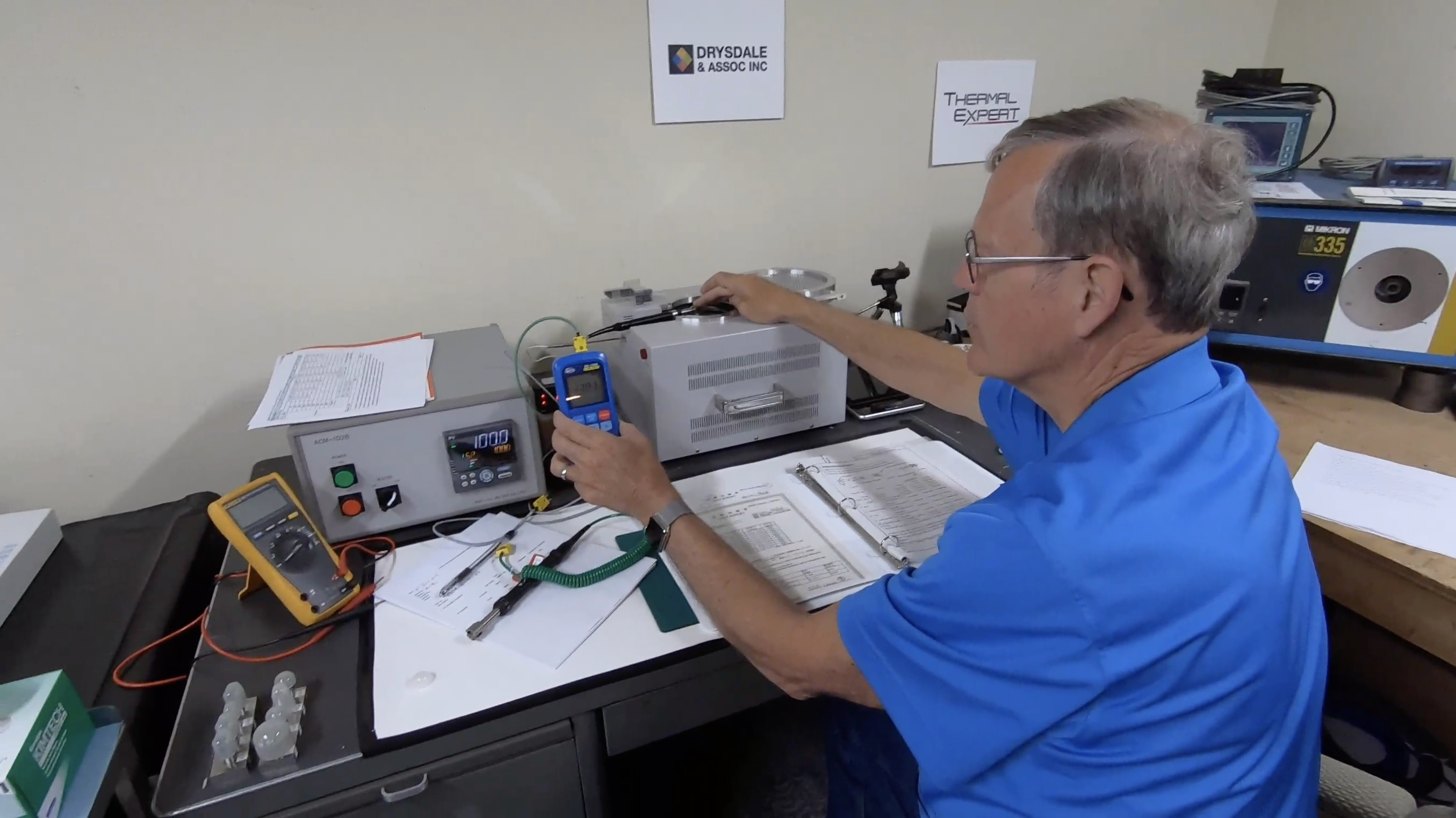
In fact I have another probe here. Would you like me to give a quick demonstration?
Okay. We have another probe and Ill plug it into the reader. You will see that it's currently reading about 20 degrees Celsius. The temperature in this room is about 20 degrees Celsius. It looks like it must be good. I have my referencing and standard set at 100 degrees celsius. I know that this is 100 celsius up to 130...137. I think this going to be max out at 139 degrees celsius. Coming up a little higher. It’s reading way above and give a verification. This is with NIST trace of all. Thermocouple standard to verify that the temperature of this plate actually is 100 degrees celsius.
If someone didn't know better they would this unit is yes it reads temperature correct then it must be good. In fact its way off and its way off on the high side. So you can’t tell by looking at it. Actually I can tell by looking at it. This is another very important point. There’s a lets say N series instrument and I have N series. If i show your series of heads here, you can tell that this is good. This is good. This is good. This is not good and look closely. You can see the indentation on the element then if you look closely at this, you see the element is also severely depressed. That severe depression affects the manner that the thermocouple makes contact with the surface and that whats tell you this isn’t going to read right.
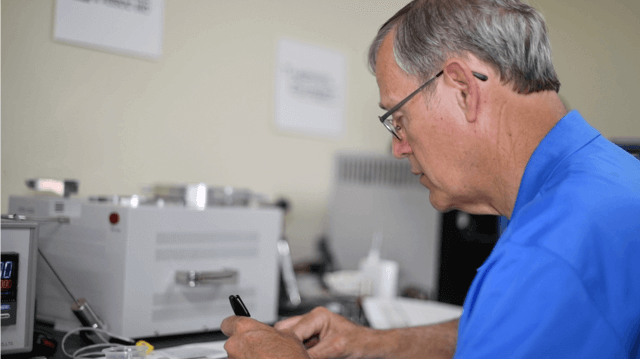
Do you think that in any way the product actually helps with these common problems?
The Anritsu products do help to the degree that the user understands how to use them. I'm an engineer. That's both a curse and a blessing. I get a new toy. The first thing I do is read the instructions and If I’m going to get a new toy, I read spec sheets and instructions before I buy it. So the point is that if you look at the Anritsu catalog, it's more than just a catalog of products. There’s a tremendous amount of technical information that's provided that most companies don’t give. For example, I want to point out this section on durability and on this section it discusses how many times you can effectively use that thermocouple in different temperature ranges before you’re essentially going to wear it out. Then there’s also a wide range of styles everything about temperature measurement. It's about having the right tool for the right job. The person that has one temperature probe. They think that it can be used for everything. They got one hammer and they can use it to do everything.. It will drive the nail really well but it won’t drive screw really well. This is one of the really problems of people that do temperature measurement. They don’t understand the intricacy associated with what you actually have to do to get good, accurate, reliable and repeatable measurements.
Whats the difference between Anritsu products compared to other temperature probe sets offered in the market?
I say the difference between Anritsu and other competitors has to do with the company and the customer support. It's about sitting down with the customer. Understanding what their requirement is and suggesting the correct instrument for the correct job. I had a particular application a couple of years ago and I was struggling trying to figure out what exactly I need it and for this application my customer was producing a copper pipe that was 3 inches in diameter and its moving continuously. The temperature was about 400 degrees Celsius. They really need to get actual temperature of the tube in process as its moving okay. This wouldn’t be the right instrument to do that way. It covers the right temperature range but why it wouldn’t be the right instrument. It wouldn't contact the surface properly and it's not designed for the right amount of slip. You can see the concave surface here and this instrument is designed specifically for the job. That's what I mean that you got to have the right tool for the right job to get the accurate measurement and Amitsu does it marvelous job of helping the customer select and specify the right tool.
You mentioned in your example about getting accurate measurement as well as the durability of the probes. Its meant to last a long time with great accurate and very responsive temperature measurement. Is that why Anritsu is unique?
Absolutely so for example we do something infrared work and with infrared sensors. You always have the issue of what's the right emissivity setting for an infrared sensor and I do a fair amount of high temperature work with companies that are doing forgings. So for forgings the most common instruments is an infrared sensor to monitor the temperature of the billets that are coming out but in order to set the emissivity. So this is an Anritsu probe that is designed specifically for that measurement. It has an upper limit of 2000 degrees Farenheight. 1100 degrees celsius. I can use this to get a contact measurement which I know is going to be accurate for that billet and with that I can set emissivity of infrared instrument to give me the proper infrared reading. I’m properly reliant on the anritsu probes in order to get infrared probes to read correctly.
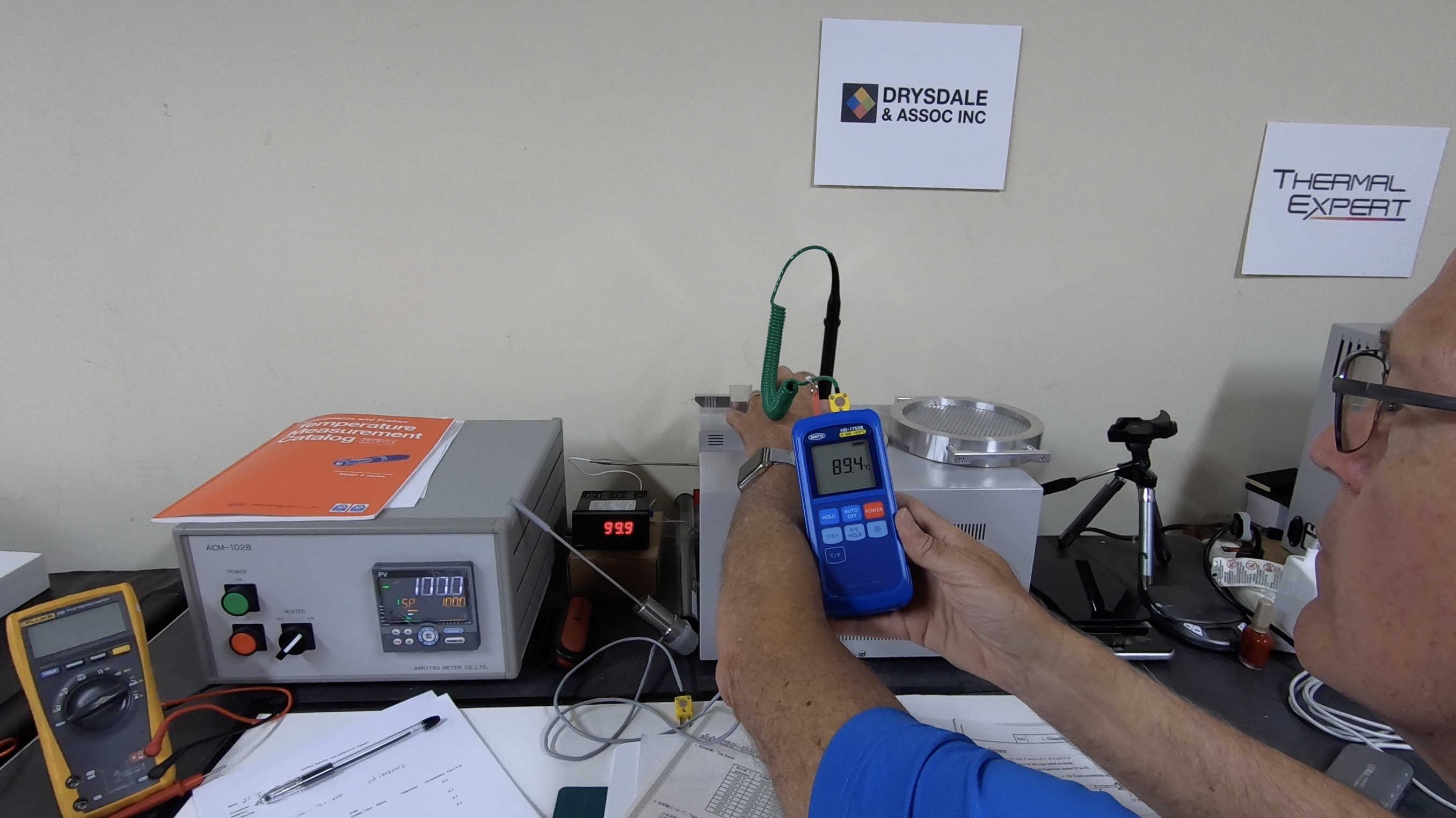
Can you list down three unique things about Anritsu? Why do you like them?
The most significant issue about the Anritsu products is the quality of the products. They don’t have US National Institute of Standards and traceability but they do have a similar function from Japan so certifications and test reports from Japan validating the accuracy of instruments that we use. It's an option but it comes with all of the products that I use. This is very important to me because as a company and calibration lab, we are working on ISO 17025 accreditation for our laboratory and our services. The accreditation requires that we have traceability to international standards and without that we don’t have anything you know. Temperature is critical. Temperature is everything about life. So you really have to have an assurance that you know what you are doing in order to produce a quality product. That doesn’t matter what industry you are in. What are you working with. With foods or plastics glass metal. Everything is about understanding temperatures and understanding how heat behaves in materials. The Anritsu products are very high quality. They have international traceability and I believe they are good value. They are not the lowest price product on the market but I believe they have the highest value products on the market when you take into account all the other factors.
Who do you recommend these products or to which field of work would best fit this product?
Literally every industry that for which temperature is an important factor. They would benefit from Anritsu probes. It wouldn't be fair to single out one over the other. I do a lot of work in steel and glass. So you know I could say steel and glass they are going to be the biggest beneficiary. But food products are just critical in getting the proper temperature for foods in the cooking process today. Most foods are processed foods. If you don’t process it at the right temperature you end it up with bad things that will make people sick. Jamie knows that any less important than having the right metallurgical property is in the steel that is coming out of the mill. It's all very important and the bottom line is really to have accurate measurements for everything that you do.
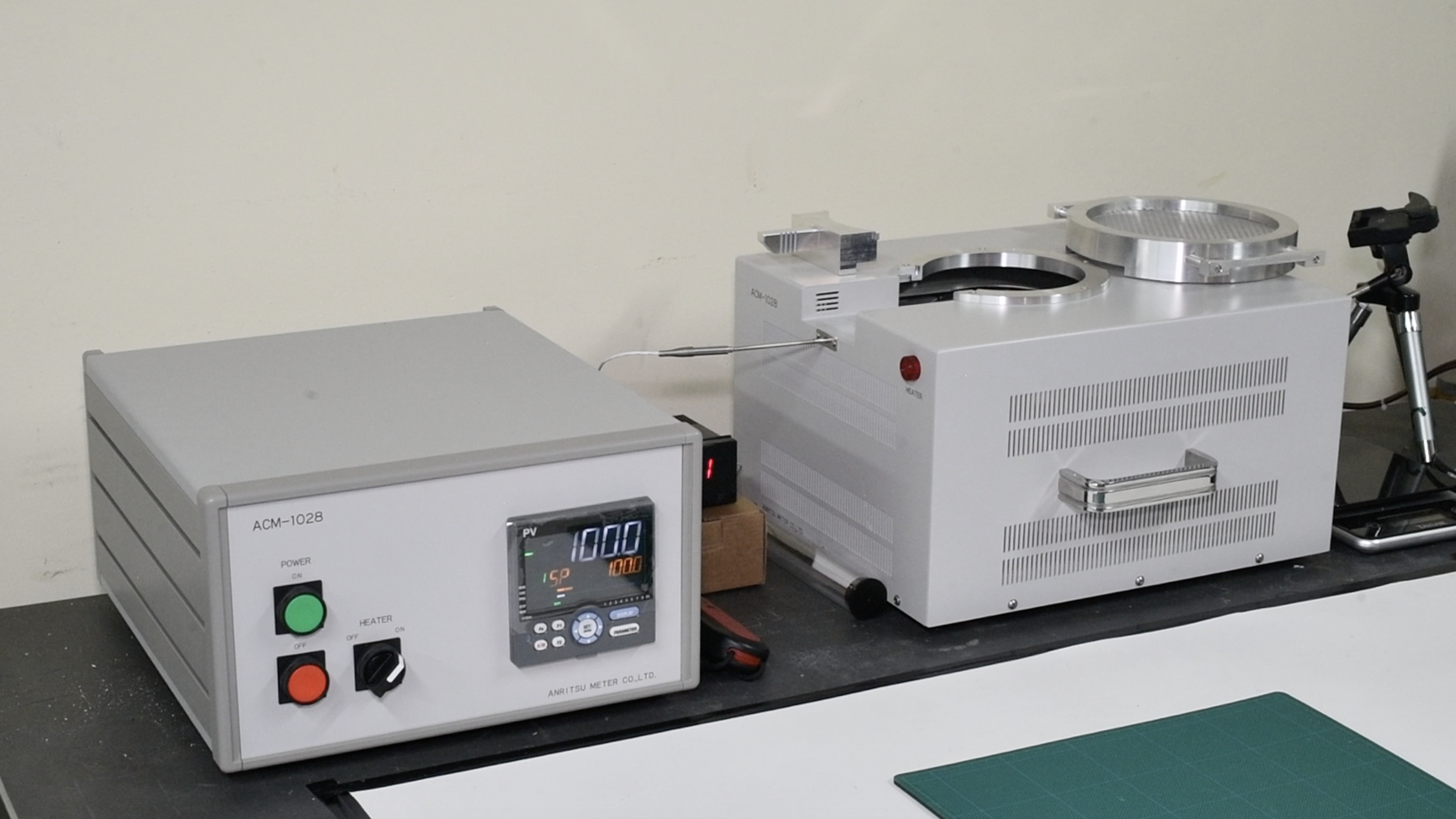
What would you be looking for in the future? How can Anritsu improve or is there additional features that you are looking for new products?
The number one feature that my customers asked me is for lower price but more important than lower price is value and it's all about having the right product for the right application. As you go through the Anritsu catalog that I was showing there's the English catalog is the small one. The Japanese catalog is three times that size. The point is that there are so many variations in options and considerations that are available. It's not about adding more features. It's about specifying the right features for the right application and anritsu does a fantastic job working with customers to help do that.
Is there anything you want to add or promote?
The number one thing that I might add is that we offer a service that is fairly unique in the world of temperature calibration. You know that infrared instruments and thermocouples. They all needs to be calibrated but when you take that calibrated instrument out of the line and make measurement in ISO terms there’s a lot of uncertainty about the accuracy of the measurement that its being made. ISO relies on the calibration of the instrument in order to maximize the uncertainty and the scope of the calibration that we are working on. We’ve identified a process for going to the customer sites and essentially calibrating their process to ensure that the temperature of the product or process is within calibration. Thats a huge step beyond just make the sensor reads right. This is about ensuring that the temperature of the product is being read correctly and that's what we do.